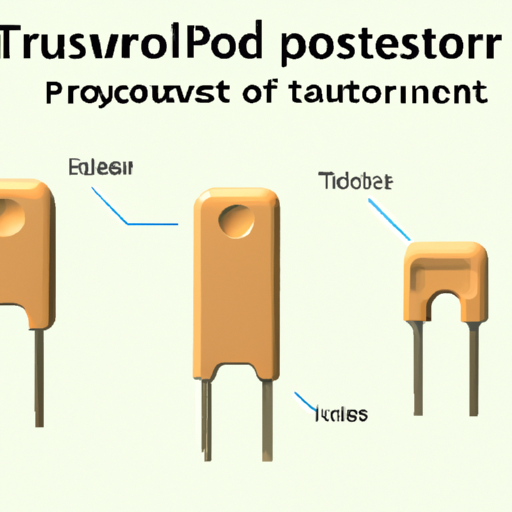

Transistor output is a crucial component in many electronic devices, serving as a key interface between the digital and analog worlds. Transistors are semiconductor devices that can amplify or switch electronic signals, making them essential for a wide range of applications, from audio amplifiers to power supplies. In this article, we will explore the various features of transistor output and how they contribute to the performance and functionality of electronic devices.

Another important feature of transistor output is its ability to switch signals on and off. Transistors can act as electronic switches, turning a signal on or off based on the input voltage or current. This is essential for digital circuits, where transistors are used to control the flow of data and enable logic operations. By rapidly switching between on and off states, transistors can process digital signals with high speed and accuracy, making them ideal for applications such as computers, smartphones, and other digital devices.
Transistor output also offers high efficiency and reliability. Transistors are solid-state devices that have no moving parts, making them more durable and less prone to mechanical failure compared to traditional electromechanical switches. This reliability is crucial for critical applications such as medical devices, aerospace systems, and industrial equipment, where downtime can be costly and potentially dangerous. Additionally, transistors have low power consumption and generate minimal heat, making them energy-efficient and suitable for battery-powered devices or applications where heat dissipation is a concern.
Furthermore, transistor output can be easily controlled and manipulated. Transistors can be configured in various circuit configurations, such as common emitter, common collector, and common base, to achieve different amplification and switching characteristics. By adjusting the biasing voltage, current, and other parameters, the behavior of the transistor output can be tailored to meet specific requirements and optimize performance. This flexibility allows designers to customize transistor circuits for a wide range of applications, from low-power sensors to high-power motor drives.
In addition to these features, transistor output also offers excellent linearity and frequency response. Transistors can faithfully reproduce the input signal without distortion or loss of fidelity, making them ideal for audio and radio frequency applications. The high-frequency response of transistors allows them to amplify signals across a wide range of frequencies, from audio frequencies to radio frequencies, enabling them to be used in a variety of communication and signal processing systems.
Overall, transistor output is a versatile and essential component in modern electronics, providing amplification, switching, efficiency, reliability, control, linearity, and frequency response. Whether used in audio amplifiers, digital circuits, power supplies, or communication systems, transistors play a critical role in shaping the performance and functionality of electronic devices. As technology continues to advance, transistors will continue to evolve and improve, enabling new and innovative applications that push the boundaries of what is possible in the world of electronics.
Transistor output is a crucial component in many electronic devices, serving as a key interface between the digital and analog worlds. Transistors are semiconductor devices that can amplify or switch electronic signals, making them essential for a wide range of applications, from audio amplifiers to power supplies. In this article, we will explore the various features of transistor output and how they contribute to the performance and functionality of electronic devices.

Another important feature of transistor output is its ability to switch signals on and off. Transistors can act as electronic switches, turning a signal on or off based on the input voltage or current. This is essential for digital circuits, where transistors are used to control the flow of data and enable logic operations. By rapidly switching between on and off states, transistors can process digital signals with high speed and accuracy, making them ideal for applications such as computers, smartphones, and other digital devices.
Transistor output also offers high efficiency and reliability. Transistors are solid-state devices that have no moving parts, making them more durable and less prone to mechanical failure compared to traditional electromechanical switches. This reliability is crucial for critical applications such as medical devices, aerospace systems, and industrial equipment, where downtime can be costly and potentially dangerous. Additionally, transistors have low power consumption and generate minimal heat, making them energy-efficient and suitable for battery-powered devices or applications where heat dissipation is a concern.
Furthermore, transistor output can be easily controlled and manipulated. Transistors can be configured in various circuit configurations, such as common emitter, common collector, and common base, to achieve different amplification and switching characteristics. By adjusting the biasing voltage, current, and other parameters, the behavior of the transistor output can be tailored to meet specific requirements and optimize performance. This flexibility allows designers to customize transistor circuits for a wide range of applications, from low-power sensors to high-power motor drives.
In addition to these features, transistor output also offers excellent linearity and frequency response. Transistors can faithfully reproduce the input signal without distortion or loss of fidelity, making them ideal for audio and radio frequency applications. The high-frequency response of transistors allows them to amplify signals across a wide range of frequencies, from audio frequencies to radio frequencies, enabling them to be used in a variety of communication and signal processing systems.
Overall, transistor output is a versatile and essential component in modern electronics, providing amplification, switching, efficiency, reliability, control, linearity, and frequency response. Whether used in audio amplifiers, digital circuits, power supplies, or communication systems, transistors play a critical role in shaping the performance and functionality of electronic devices. As technology continues to advance, transistors will continue to evolve and improve, enabling new and innovative applications that push the boundaries of what is possible in the world of electronics.